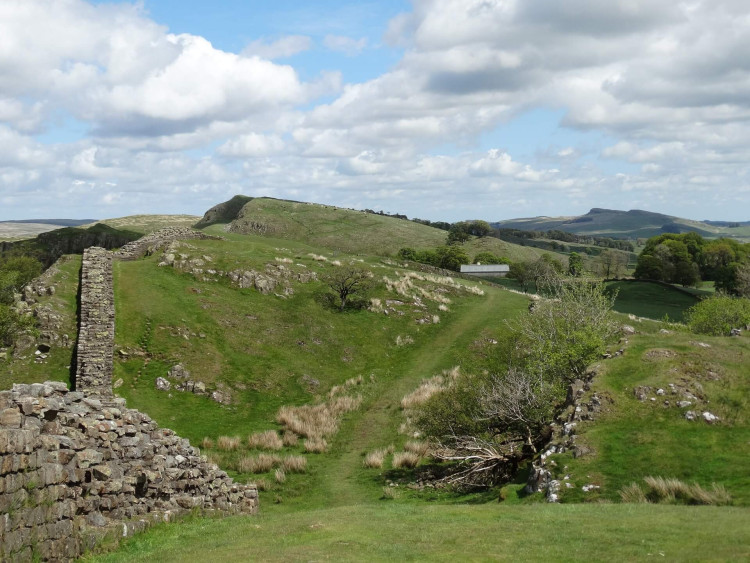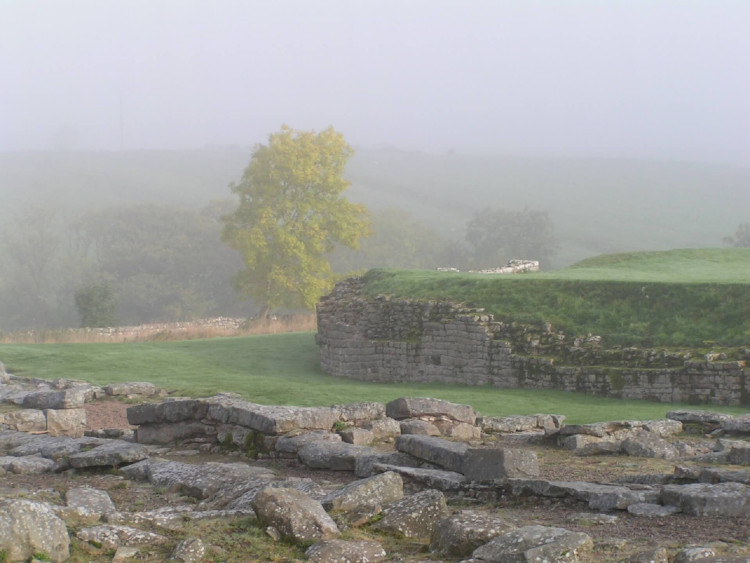Hadrian's Wall in England - 120 kilometers wall from II century
Where is located Hadrian's Wall?
Address of Hadrian's Wall is England
show on map
When was built Hadrian's Wall?
Built date of Hadrian's Wall is 2nd century e.e.

Facts, informations and history of Hadrian's Wall
The wall is 4.5 meters high and 2.5 - 3 meters wide.
Wall width is variable. The western part was initially made of peat, later it was made of stone.
750,000 m were used for the construction of the monument? stones.
For centuries, Hadrian's Wall was robbed of stone (evidence of this is visible in many surrounding buildings), and in some places it was blown up to make it easier to draw stone .
Originally the wall consisted of milestones (spaced every 1 mile, ie about 1481 m) and turrets (two equally spaced between each pair of castles) ). Milestones could accommodate a few men, but most of the troops were stationed south of the wall. Soon everything changed. 14 new watchtowers were built on the wall line, including those that can now be viewed at Housesteads, Chesters and Birdoswald, and Hadrian's border has become home to 10,000 soldiers.
The Roman emperor built a wall to revive the Romans from the barbarians.
Construction works have been completed within 7-8 years.
A special bus "Hadrian's Wall" with three guides has been helping you navigate the wall for 28 years.
From April 27 to June 3, around 100 special festivals, concerts, shows and rallies are held along the wall. In the period from April to August, archaeologists are exploring the wall.
Each year, around 1.25 million people visit the wall. Of which over 500,000 visit forts and museums open to the public. Unfortunately, since 1970, the number of visitors to the monument has been evenly decreasing.
Construction/building type
Building Hadrian's Wall is of type Wall
Architectural style
Architectural style of Hadrian's Wall is Ancient Roman
The ancient Roman architectural style is mainly characterised by the use of brick and marble and the use of columns and triangular pediments. Roman architecture was known for its monumental buildings such as amphitheatres, thermopiles and temples. Roman architects were known for their ability to use natural light and ventilation in their buildings, which was particularly important in the warm climate of Italy. ... czytaj więcej.
Other dimensions, parameters and frequently asked questions

How many meters have Hadrian's Wall?
Hadrian's Wall have length 120 km
What material is the building made of?
Hadrian's Wall is made of the following materials: Stone
Other names
The building is also known by other common names or in the original language, i.e. Hadrian's Wall, Wał Hadriana
Is the building on the UNESCO World Heritage List?

The listing took place in the year 1987.
Details of the entry are available on the Unesco website at https://whc.unesco.org/en/list/430ter/
Official website
The official website of the building, where up-to-date information can be found, is http://www.visithadrianswall.co.uk
Photo gallery Add photo
Location on map / How to get there





















Comments to Hadrian's Wall (18) Average rating: 4,0 Add comment / Rate building
Based on 18 comments